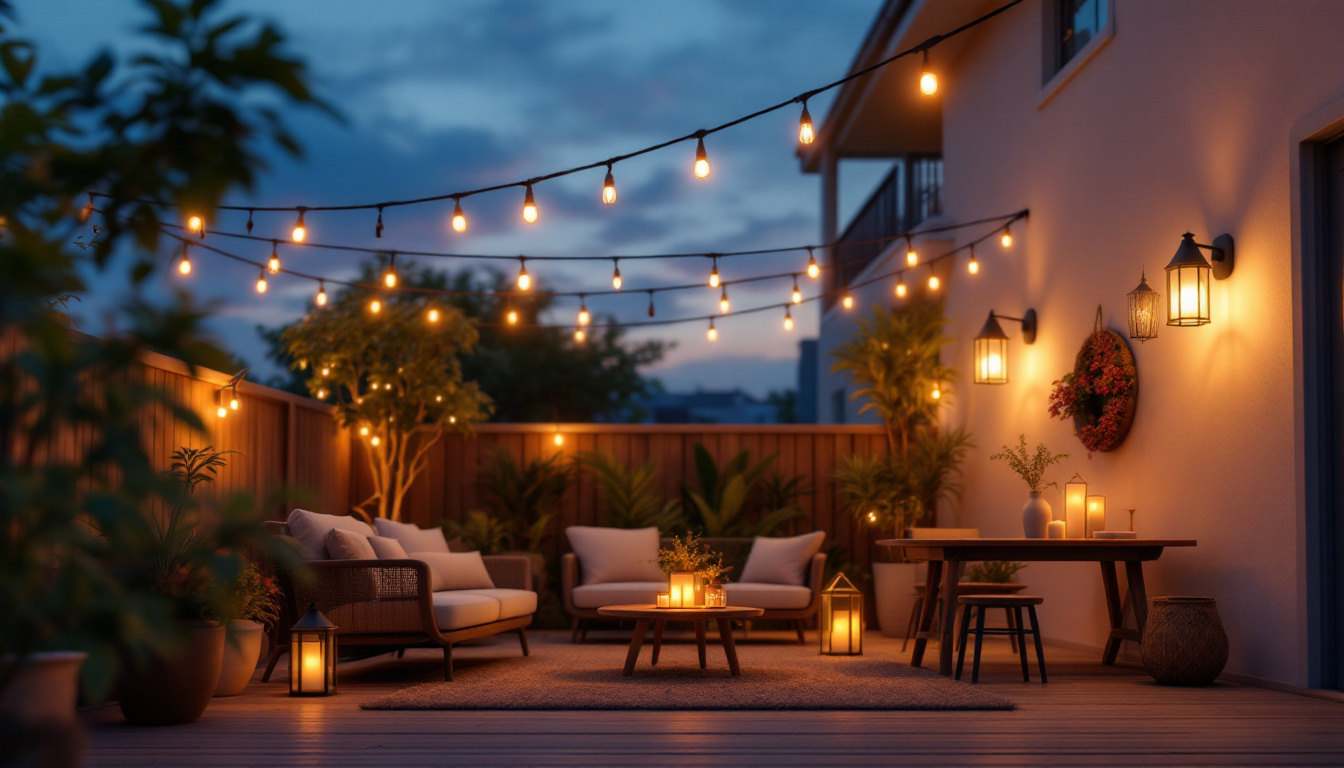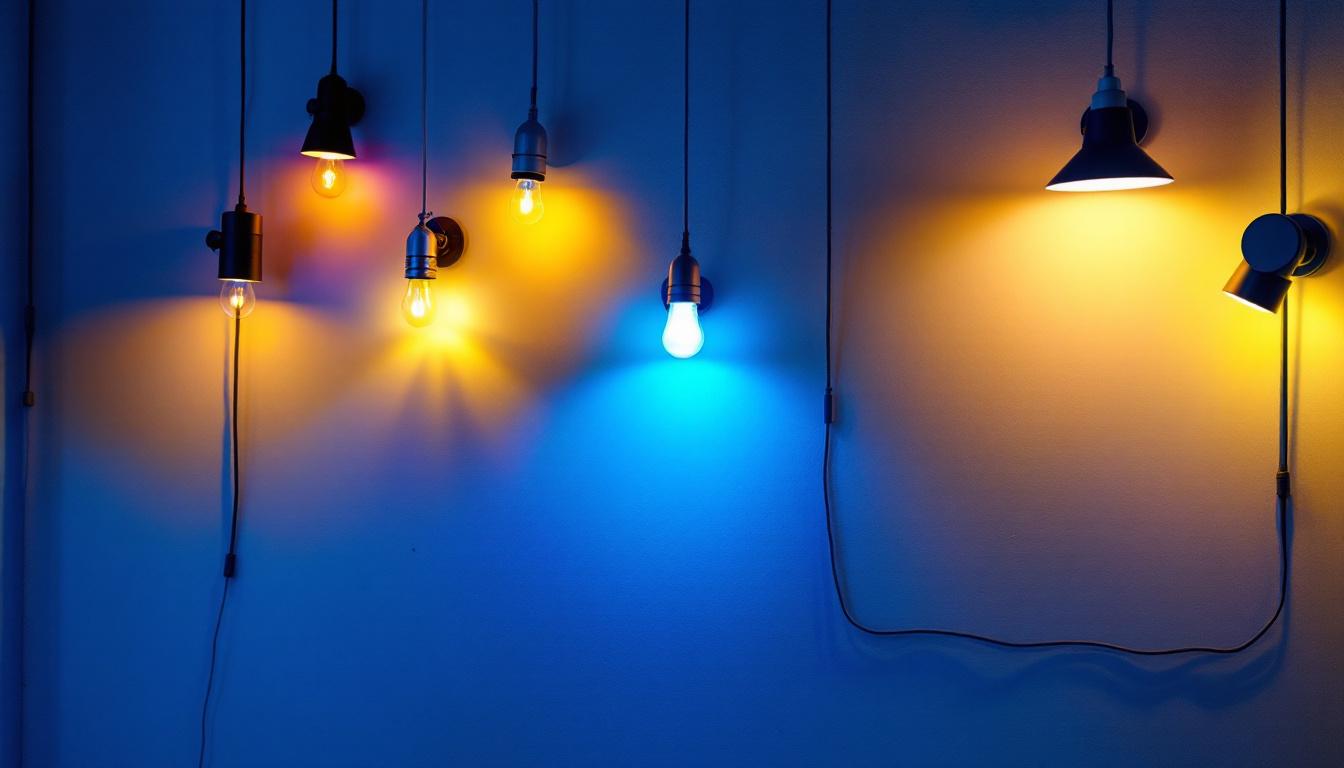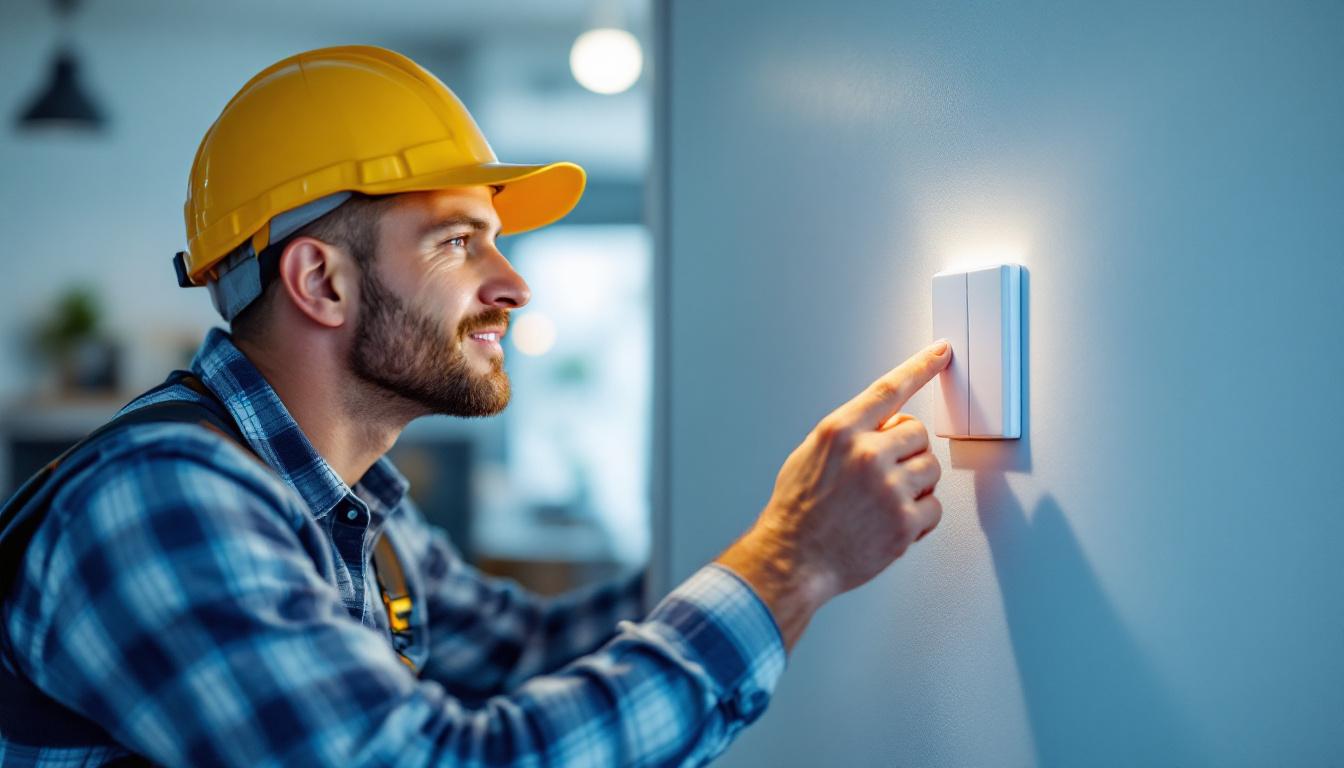
As outdoor living spaces gain popularity, the importance of effective lighting design for patios has never been more crucial. Lighting contractors play a significant role in enhancing the ambiance, safety, and functionality of these spaces. This article delves into essential tips that lighting contractors should consider when planning and installing outdoor lights for patios.
Before diving into the specifics of installation, it is vital for lighting contractors to understand the primary purposes of patio lighting. These purposes can vary widely, from creating a welcoming atmosphere to ensuring safety during nighttime use.
One of the most critical aspects of patio lighting is its ability to create a warm and inviting atmosphere. Soft, diffused lighting can transform an ordinary patio into a cozy retreat. Contractors should consider using a mix of ambient, task, and accent lighting to achieve the desired mood. For instance, string lights or lanterns can offer a whimsical touch, while wall sconces can provide a more sophisticated look. Additionally, the color temperature of the lights plays a significant role in setting the ambiance; warmer tones can evoke feelings of comfort and relaxation, while cooler tones may lend a more modern and energetic vibe. Incorporating dimmable options can also allow homeowners to adjust the lighting according to the occasion, whether it’s a quiet evening with a book or a lively gathering with friends.
safety is another paramount concern when designing patio lighting. Proper illumination can help prevent accidents and ensure that guests feel secure. Lighting contractors should focus on illuminating pathways, steps, and any potential hazards. Motion sensor lights can also enhance safety by providing illumination when movement is detected, ensuring that areas are well-lit without wasting energy. Furthermore, using lights with a higher lumen output in critical areas, such as staircases or uneven surfaces, can significantly reduce the risk of falls. It’s also advisable to consider the placement of lights to minimize shadows, which can create hidden dangers. By strategically positioning lighting fixtures, contractors can create a well-lit environment that promotes safety while maintaining aesthetic appeal.
Patios are often used for various activities, from dining to entertaining. Therefore, the lighting design should cater to these functions. Task lighting, such as focused lights over dining areas or cooking spaces, can make these activities more enjoyable and practical. By understanding the intended uses of the patio, contractors can tailor their lighting solutions accordingly. For instance, incorporating adjustable fixtures can allow for flexibility in lighting angles, ensuring that each area is adequately illuminated based on the activity at hand. Additionally, integrating smart lighting technology can enhance functionality further; homeowners can control the lighting through mobile apps or voice commands, adjusting brightness and color to suit their mood or the event. This level of customization not only improves usability but also adds a modern touch to outdoor spaces, making them more appealing for everyday use and special occasions alike.
The selection of lighting fixtures is a crucial step in the design process. The right fixtures not only enhance the aesthetic appeal but also ensure durability and functionality in an outdoor setting. Proper lighting can transform a backyard into a cozy retreat or a vibrant entertaining space, making it essential to consider various factors before making a decision.
outdoor lighting fixtures must withstand various weather conditions, including rain, snow, and extreme temperatures. Therefore, choosing materials that are both durable and weather-resistant is essential. Stainless steel, aluminum, and high-quality plastics are popular choices due to their resilience. Additionally, fixtures with corrosion-resistant finishes can help prolong their lifespan. Beyond just the material, it’s important to consider the maintenance requirements of these fixtures. Some materials may require periodic cleaning or treatment to maintain their appearance and functionality, which can influence the long-term satisfaction of the homeowner.
The style of the fixtures should complement the overall design of the patio. Whether the patio has a modern, rustic, or traditional aesthetic, there are lighting options available to match. For example, sleek, minimalist designs may work well in contemporary settings, while ornate fixtures can enhance a more classic look. Contractors should also consider the color temperature of the lights; warmer tones often create a more inviting atmosphere. Furthermore, the placement of these fixtures plays a significant role in achieving the desired ambiance. Strategically positioning lights to highlight landscaping features, pathways, or architectural elements can create a layered lighting effect that enhances the outdoor experience.
With the growing emphasis on sustainability, energy-efficient lighting options are becoming increasingly popular. LED fixtures are a top choice for outdoor lighting due to their longevity and low energy consumption. Not only do they reduce electricity costs, but they also minimize environmental impact. Lighting contractors should educate clients about the benefits of energy-efficient options and consider incorporating them into their designs. Additionally, integrating smart lighting systems can further enhance energy efficiency. These systems allow homeowners to control their outdoor lighting remotely, set schedules, and even adjust brightness levels based on the time of day, providing both convenience and energy savings. As technology continues to evolve, the possibilities for innovative outdoor lighting solutions are expanding, making it an exciting time for design and functionality in outdoor spaces.
Effective lighting techniques can significantly enhance the functionality and aesthetics of a patio. Understanding various methods allows lighting contractors to create tailored solutions that meet their clients’ needs.
Layering light involves combining different types of lighting to achieve a balanced and dynamic effect. This technique includes ambient, task, and accent lighting, each serving a specific purpose. For example, ambient lighting can provide overall illumination, while task lighting focuses on specific areas, such as dining tables or cooking zones. Accent lighting can highlight architectural features or landscaping elements, adding depth and interest to the space.
Incorporating dimmers and smart controls into patio lighting can enhance versatility and convenience. Dimmers allow users to adjust the brightness according to the time of day or the occasion, creating the perfect ambiance for any gathering. Smart controls can enable remote operation, scheduling, and even automation based on environmental factors, such as sunset times. These features not only improve user experience but also contribute to energy efficiency.
Patios often coexist with beautiful landscaping, and effective lighting can help showcase these features. Uplighting trees, downlighting pathways, or spotlighting sculptures can create stunning visual effects that enhance the overall outdoor experience. Lighting contractors should work closely with landscape designers to ensure that the lighting complements the natural beauty of the surroundings.
Before installation begins, careful planning and layout are essential. Contractors should assess the patio’s size, shape, and intended use to determine the optimal placement of fixtures. Creating a lighting plan that outlines fixture locations, types, and power sources can help streamline the installation process. Additionally, considering the electrical load and circuit requirements is crucial to avoid overloading the system.
Outdoor lighting often requires specialized wiring techniques to ensure safety and functionality. Using weatherproof cables and connectors can protect against moisture and corrosion. Moreover, burying low-voltage wiring at least 6 inches underground can prevent accidental damage during landscaping activities. Lighting contractors should also be familiar with local electrical codes and regulations to ensure compliance.
Once the installation is complete, thorough testing is necessary to ensure that all fixtures function correctly. Contractors should check for any flickering lights, uneven illumination, or dead spots. Adjustments may be needed to optimize the lighting effect and achieve the desired ambiance. A final walkthrough with the client can help confirm that the lighting meets their expectations.
Outdoor lighting fixtures can accumulate dirt, dust, and debris over time, affecting their performance and appearance. Regular cleaning, using a soft cloth and mild soap, can help maintain their aesthetic appeal. Contractors should recommend a cleaning schedule to clients, especially before the outdoor season begins.
Periodically checking electrical components, such as connections and bulbs, can help identify potential issues before they escalate. Contractors should advise clients to replace burnt-out bulbs promptly and ensure that all connections remain secure. This proactive approach can prevent costly repairs and ensure consistent performance.
As seasons change, so do the lighting needs of a patio. During winter months, for example, clients may want to adjust their lighting to accommodate holiday decorations or create a cozy atmosphere for winter gatherings. Lighting contractors can offer seasonal adjustments and recommend fixtures that are versatile enough to adapt to changing needs.
Outdoor lighting for patios presents a unique opportunity for lighting contractors to enhance the beauty, functionality, and safety of outdoor spaces. By understanding the purpose of patio lighting, selecting the right fixtures, employing effective techniques, and following best installation practices, contractors can create stunning outdoor environments that their clients will love.
Moreover, maintenance and upkeep are crucial for ensuring the longevity of these installations. By educating clients on proper care and seasonal adjustments, lighting contractors can foster long-term relationships and enhance customer satisfaction. With these key tips, lighting contractors can excel in their projects and contribute to the growing trend of outdoor living spaces.
Ready to elevate your patio lighting designs with the finest fixtures on the market? Look no further than LumenWholesale, where we offer an extensive selection of spec-grade lighting products at unbeatable wholesale prices. Say goodbye to local distributor markups and hello to superior lighting that meets the highest industry standards. With LumenWholesale, you’ll enjoy the convenience of bulk buying with free shipping, ensuring you get premium lighting at the best value — without hidden fees or compromises. Enhance your outdoor living space projects with quality, affordability, and convenience. Wholesale Lighting at the Best Value is just a click away.

Discover how LED ceiling tiles are revolutionizing the lighting industry with their energy efficiency, design versatility, and smart technology integration.

Discover the best light bulbs for can lights with expert tips for lighting contractors.

Discover why every lighting contractor needs a switch dimmer—boost energy efficiency, enhance ambiance, and increase client satisfaction.

Discover the essential checklist for lighting contractors using Loves Power Inverter to ensure seamless installations and optimal performance.